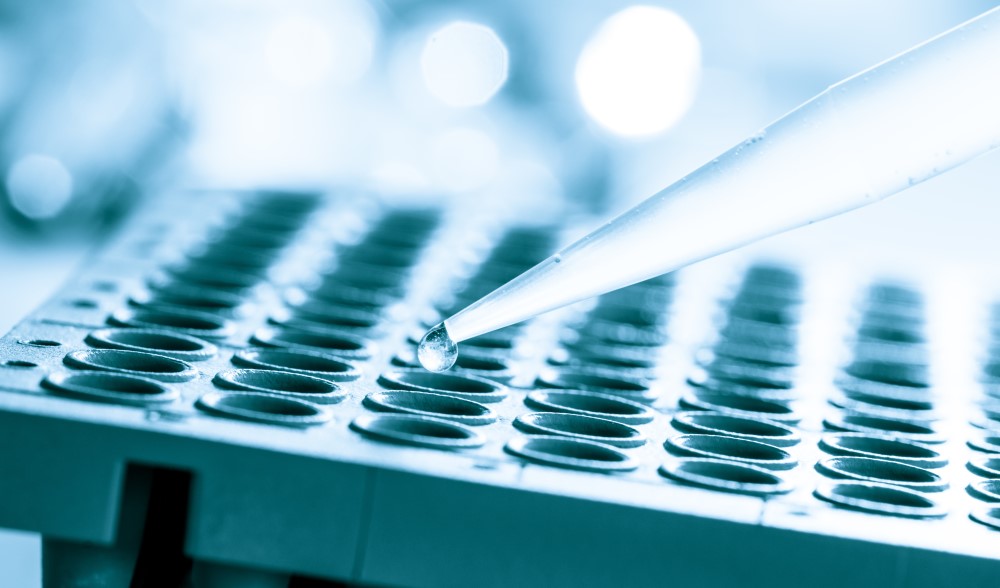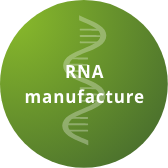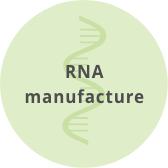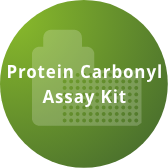Biocell Protein Carbonyl Assay Kit

Each kit contains everything you need, including standards, control samples, all reagents, a plate, and detailed instructions.

10% Discount when you buy 10 or more Biocell Protein Carbonyl Assay kits. That’s a saving of at least US$440.00. Other quotes available on request.
KEY BENEFITS OF BIOCELL PROTEIN CARBONYL ASSAY:
- Measures carbonyls quantitatively
- Requires only microgram amounts of protein
- Has a very low non-specific background
- Is highly sensitive for analysing clinical samples
- Correlates well with the colorimetric assay
- Easier to use and less labour intensive
- Can handle more samples per day than colorimetic assays
Protein Carbonyls
Protein carbonyls are biomarkers of protein oxidation that are generated by several different mechanisms during oxidative stress. They can be formed on arginine, proline, threonine and lysine residues as a result of metal-catalysed oxidation. Protein carbonyls can also arise from the direct reaction of proteins with reactive oxygen species (ROS), or can be introduced into proteins by covalent attachment of carbonyl-containing molecules such as reducing sugars or lipid peroxidation products.Assay Principle
Protein samples are reacted with dinitrophenylhydrazine (DNP) and then non-specifically adsorbed to an ELISA plate. Free DNP and non-protein constituents are easily washed away, meaning minimal interference.
The adsorbed protein is reacted with a biotinylated anti-DNP antibody followed by streptavidin-biotinylated horseradish peroxidase. Absorbance values are related to a standard curve prepared from serum albumin containing increasing proportions of HOCl-oxidized protein.
Using the Kit
Up to 89 samples can be analysed without replicates, although duplicate or triplicate analysis is recommended for best results. Carbonyl concentrations are calibrated against a protein that has been oxidised and standardised colorimetrically.
Protein carbonyls are formed through oxidation of proteins by a variety of mechanisms, and are sensitive markers of oxidative injury. This kit provides a convenient method for analysing protein carbonyls on a small amount of protein, and is amenable to processing a large number of samples.
Stability
Biocell Protein Carbonyl Assay Kits do not need to be kept under cool conditions for short-term transportation. The kits are stable at room temperature for up to six weeks. If the kit is separated into freezer, fridge and bench as per instructions on the leaflet, it is stable until at least the expiry date.
Background
An ELISA test, using an anti-DNP antibody, was developed by: I. Hendrikje Buss, Christine C. Winterbourn and coworkers at the Centre for Free Radical Research, University of Otago, Christchurch, New Zealand.
Carbonyls are stable at -80 °C for months. However, levels change over that time in samples stored at -20 °C.
Most healthy adult plasma protein carbonyls are around 0.05 nmol/mg. These values are elevated in many pathologies including diabetes, sepsis, chronic renal failure, acute pancreatitis, arthritis and coronary heart disease.
Expect a linear curve with R-squared >0.95. A common reason for a non-linear standard curve is the substrate has been left too long before adding the stop solution and the top standards have saturated. Often the curve still fits very well when the highest standard is removed, or if sample values are also high, use a second order fit.
When first running the ELISA, it is a good idea to read the samples at 650 nm and save the results before adding the acid stop solution. It is recommended to add the solution when the highest standard/sample has reached an absorbance reading of 0.25 to 0.5.
This is usually because the freeze-dried standards have not been fully dissolved. With the current formulation they should dissolve readily, but if you are having problems, vortex vigorously at intervals over an hour at room temperature.
You can read within the 420-480 nm absorbance range.
In reply to concerns about proteins sticking to the ELISA plate, the kit uses 3590 High Binding Plates, which the manufacturers guarantee have surface chemistry such that protein sticks and stays attached. We have washed hundreds (if not thousands) of plates extremely vigorously and never had a problem. However, do not to let the plates completely dry out at any stage.
The kit is stable at room temperature only for 6 weeks after which its performance will decline. Only if the kit is separated into freezer, fridge and bench as per instructions, it is stable until the expiry.
The DNP solution should not be stored frozen or at 4 °C. DNP is in 6 M guanidine and is stable for many months if stored at room temperature in the dark.
The EIA buffer and blocking reagent can be stored frozen, and are stable for many months.
One user accidently froze the HRP-streptavidin. We tested this and found that it did not affect its performance.
Standards are at 40 mg/mL when reconstituted and remain stable at -80°C for months or even years. Reconstituted standards and quality controls can be frozen and thawed twice.
A key feature of the assay is that sufficient protein is added to saturate binding to the well. Under the conditions of the assay, approximately 1 μg of derivatized protein is added to each well. This is well over saturation and as a result, small variations in protein concentration can be tolerated.
No. Protein binding must be saturated in the assay. Halving the concentration should make no difference, and larger dilutions will give variable binding and unreliable results. The best way of overcoming high readings is to have a shorter colour development time.
We do not recommend any particular method of tissue preparation. However, simple physical disruption works well. Tissue slicing, freeze thawing and homogenisation do not cause problems. Avoid detergents that could interfere with the DNP-derivatized protein coating the plate. We have also observed that some protease inhibitor preparations interfere due to high carbonyl content.
Extraction method: Wash/rinse tissue and homogenize vigorously in ice cold homogenisation buffer. We normally use 20 mM phosphate buffer (pH 7.4) containing 20 μM butylated hydroxytoluene (from stock dissolved in ethanol) and 100 μM diethylenetriamine pentaacetic acid to minimize oxidation during processing. Others have used 0.1% deoxycholate.
Aliquots of homogenate can be frozen at -80 °C and any precipitate should be centrifuged for 5 minutes at 10 000 rpm before assaying for total protein and carbonyl analysis.
For kit analysis, take an aliquot from each sample containing 20 μg of protein (all in an equivalent volume), add 0.8 volumes of 28% ice cold TCA and incubate for 10 minutes on ice.
Centrifuge at 10 000 g for 3 minutes (line lids up with outer edge of centrifuge) and aspirate from inner side of tube without disturbing pellet.
Add 5 μL of PBS and 15 μL of DNP to each sample and vortex.
The same DNP volume to protein volume/concentration must be maintained for samples and standards during derivatization. Therefore, when using extracts, the standards supplied in the kit must be diluted 1:10 to 4 mg/mL.
Take 5 μL of each diluted standard, add 15 μL of DNP and vortex.
Leave all samples at room temperature for 45 minutes to derivatize.
Take 5 μL, add 1 mL of PBS and vortex.
Proceed with usual kit instructions.
Download PDF of publications: Publications Using Protein Carbonyl Assay Kit
References
- Protein carbonyl measurement by a sensitive ELISA method
- Protein carbonyl measurement by enzyme-linked immunosorbent assay
- Protein carbonyl groups as biomarkers of oxidative stress
- Determination of protein carbonyls in plasma, cell extracts, tissue homogenates, isolated proteins: Focus on sample preparation and derivatization conditions













